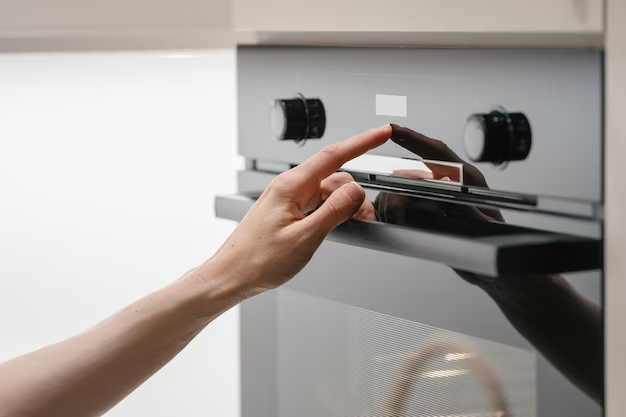Mastering the Art of Defrosting: How to Put Your Samsung Refrigerator in Defrost Mode
Ever open your Samsung refrigerator only to find a small glacier forming at the back? If you've experienced this chilling surprise, you're not alone. Frost build-up is a common issue that can impact efficiency and food safety. Luckily, you can easily manage this problem by learning how to put your Samsung refrigerator in defrost mode. In this guide, we'll walk you through the process and explore related tips to maintain your fridge's optimal performance.
🌟 Understanding the Importance of Defrosting
Before diving into the defrosting process, it's essential to understand why defrosting is crucial for your refrigerator's health. Over time, moisture inside your fridge or freezer can freeze and form layers of ice. This frost not only reduces the appliance's efficiency but can also lead to potential malfunctions. Regular defrosting ensures:
- Better energy efficiency: Frost build-up forces your refrigerator to work harder, consuming more energy.
- Consistent cooling: Frost can obstruct airflow, causing uneven cooling and potentially spoiling food.
- Extended appliance lifespan: Routine defrosting helps prevent strain on the appliance's components.
🔧 How to Activate Defrost Mode on Your Samsung Refrigerator
Activating the defrost mode is a straightforward process, but the steps may vary slightly depending on the model of your Samsung refrigerator. Below, we've outlined a general method that applies to most models:
Step 1: Locate the Control Panel
The control panel is typically found on the interior side of your refrigerator or as a part of the digital display on the front. This is where you will find the buttons to start the defrost process.
Step 2: Initiate Defrost Mode
- For Models with Touch Buttons: Press the "Freezer" and "Fridge" buttons simultaneously and hold for about 8 to 10 seconds. You may hear a beep or see the display change, indicating the defrost mode is activated.
- For Models with Manual Knobs: Turn the dial or knob to the "Defrost" position. Consult your user's manual if your model has specific instructions.
Step 3: Wait for the Defrost Cycle to Complete
Defrost cycles usually take around 20 to 30 minutes, depending on the amount of frost accumulated. It's best to keep the refrigerator doors closed during this time to allow the defrosting process to work efficiently.
Step 4: Clean and Dry the Interior
Once the defrost cycle is complete, wipe down the interior of your refrigerator to remove any remaining moisture. This will help prevent future frost build-ups.
Step 5: Reset to Normal Operation
After cleaning, set your controls back to the desired temperature settings. Your refrigerator is now ready to resume regular cooling.
🧊 Why Frost Forms and How to Prevent It
Understanding why frost forms can help you take preventative measures. Here are some common causes and tips to keep frost at bay:
Frequent Door Opening: Each time you open your refrigerator, warm air enters and condensation can form, eventually freezing. Tip: Minimize door openings and ensure the door seals effectively.
Improper Temperature Settings: A very low freezer setting can encourage frost accumulation. Tip: Keep your fridge around 37°F (3°C) and freezer around 0°F (-18°C).
Defective Door Seals: Worn-out seals allow warm air to enter. Tip: Check and replace seals as needed to maintain efficiency.
Overloading: Crowding can prevent air circulation, leading to frost. Tip: Organize your items to ensure air can circulate.
🛠️ Additional Troubleshooting Tips for Defrosting & Frost Issues
Even with regular defrosting, some Samsung refrigerator models may face recurring frost problems. If you're struggling to keep your fridge frost-free, consider these expert tips:
Check for Technical Issues
- Frozen or Clogged Defrost Drain: If the drain is blocked, melted water cannot exit, leading to frost. Carefully inspect and clear any clogs in the drain tube.
- Defective Defrost Thermostat or Timer: These components control when your fridge enters defrost mode. Malfunctions may require professional assessment.
Optimize Storage Practices
Proper storage can play a significant role in preventing frost build-up:
- Wrap Foods Properly: Uncovered food releases moisture, promoting frost. Use airtight containers or wrap items tightly.
- Ensure Airflow: Leave space between items and the walls of the fridge/freezer to allow air to circulate efficiently.
Implement a Maintenance Routine
Regular maintenance can preemptively address issues before they escalate:
- Routine Defrosting: Manually defrost at the first sign of frost, rather than waiting for significant accumulation.
- Seal Inspection: Periodically inspect door seals for wear and tear.
📋 Quick Reference Guide: Defrosting Your Samsung Refrigerator
To empower you with key points, here’s a quick glance at the essential steps and tips for maintaining a frost-free Samsung refrigerator:
- 📍 Locate Control Panel: Identify your model's defrost mode initiation method.
- 🔄 Start Defrost Cycle: Use control panel buttons or knobs as applicable.
- ⏲️ Defrost Duration: Allow 20-30 minutes for complete defrosting.
- 🧹 Post-Defrost Cleanup: Wipe and dry interiors.
- 🔧 Return to Normal Settings: Reset temperature controls post-defrost.
🌐 Keeping it Green: The Environmental Impact of Proper Defrosting
Beyond improving appliance efficiency and food safety, regular defrosting contributes to a more sustainable household. By ensuring your refrigerator operates efficiently, you minimize energy consumption and reduce the carbon footprint of your home. This small but essential task supports a larger commitment to environmental stewardship.
🚀 Embark on a Frost-Free Journey
Mastering the defrost mode in your Samsung refrigerator not only optimizes performance but also enhances the appliance's lifespan. By integrating routine defrosting into your maintenance schedule and following the best practices outlined above, you'll enjoy a more efficient, reliable, and environmentally friendly refrigerator. With these steps in hand, you're ready to tackle any frost issues head-on. So set aside a few moments, defrost confidently, and enjoy the benefits of a well-maintained refrigerator.
